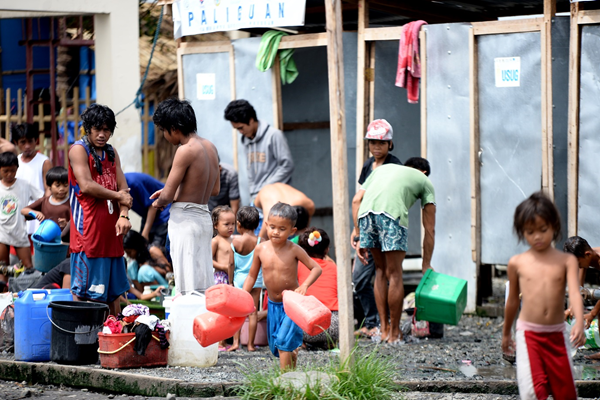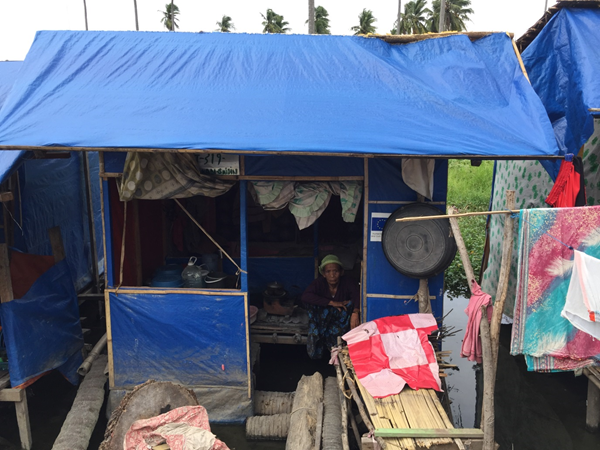The Philippines, with a unique history of embracing refugees, turns inward to address IDPs
On 19 September, the UN Summit on Refugees and Migrants took place at the UN Headquarters in New York on the heels of the 16th annual World Refugee Day. This is the first time a high-level summit involving the Heads of State and Government will take place, providing a unique opportunity to develop a better system for governing migration and responding to large movements of refugees and migrants. Earlier this year, the UN Refugee Agency launched a petition to that will be presented at this summit to tell governments they must work together and do their share for refugees.
Welcoming refugees from abroad
Since the early 20th century, the Philippines has welcomed multitudes of refugees from around the world when other nations would not, and has actively engaged to resettle them. Bernard Kerblat, former UNHCR Representative in the Philippines, extensively researched the history of asylum seekers in the Philippines.
Kerblat notes the country’s modern history of welcoming refugees and stateless people began within a few decades of its independence from Spain and subsequent occupation by the United States. In 1923, the first group to seek refuge in the Philippines arrived as part of a larger diaspora of “White Russians” escaping the Communist Red Army. Most of the 800 exiles were subsequently transferred to the United States (US), but some chose to remain.
From that point until the beginning of this century, conflicts resulting from the spread of fascism, communism and imperialism across Europe and Asia spawned successive waves of refugees. In the years leading up to and during World War II, the Philippines opened its doors to European Jews, Spanish Republicans fleeing civil war and foreigners and Chinese escaping the invading Japanese. In 1940, the country enacted its first law to regulate immigration, which limited the annual number of immigrants to 500 of any one nationality. It included, however, a provision that remains codified in the law that allows the president “to admit aliens who are refugees for religious, political or racial reasons.”
The latter half of the 20th century saw significant increases in the number of refugees seeking asylum in the Philippines. Between 1949 and 1951, more than 6,000 White Russians escaping Communist rule in China were settled near Guiuan, Eastern Samar, making it one of the largest refugee camps in Philippine history. Then conflicts in Vietnam, Cambodia and Laos brought two successive waves of refugees. From 1975 to 1992 about 400,000 Indochinese refugees passed through processing centres in Palawan and Bataan.
In between, the 1979 Iranian Revolution led several thousand Iranians studying in the Philippines to seek refugee status due to the regime change in their country. By the early 1990s, Iranians formed the majority of non-Indochinese refugees in the country. In 2000, some 600 people from East Timor flee to the Philippines in 2000 to escape the violence of its war of independence from Indonesia. The refugees were repatriated after security was restored. Finally, as recently as May 2015, the Government said it is open to sheltering Rohingya refugees from Myanmar.
The humanitarian environment in the Philippines
In spite of the Philippines’ rich history welcoming refugees, it struggles with the recurrent displacement of its own people by conflict and natural disasters. While there are no official figures on internal displacement, UNHCR notes cumulatively 4.7 million people have been forcibly displaced since 2012 in the southern island group of Mindanao by re-emerging armed conflicts and cyclical natural disasters that affect the area. In 2015 alone, over 400,000 people in Mindanao were forced to flee, with one in ten of those on a repeat basis, by conflict, rido (clan feuds) or generalized violence.
As part of these conflicts, issues with retaliatory house burning, land grabbing and attacks on schools regularly emerge. There are also reports of discrimination in the provision of assistance to those who have been displaced, recruitment of children and even killing and torture by all parties to the conflict.


OCHA Philippines maintains a sub-office in Cotabato City, in proximity to central Mindanao, where extended and repeated displacements occur the most due to armed conflict, rido and military operations in one of the poorest parts of the country. The staff members at the sub-office actively monitor internal displacements, evacuation and transition sites, and regularly engage with affected people, local governments, non-governmental organizations and other UN agencies operating in Mindanao to advocate for the needs of the internally displaced people (IDP).
The Government of the Philippines has not been ignoring this issue. At the World Humanitarian Summit in Instanbul, Turkey, in May, former Department of Social Welfare and Development Secretary Corazon Soliman announced the Philippines’ commitments to the five Core Responsibilities of the UN’s Agenda for Humanity, including to uphold international laws and norms on human rights, armed conflict and refugees. The Philippines is also a signatory to the 1951 Convention Relating to the Status of Refugees and the 1954 Convention Relating to the Status of Stateless Persons.
A law to protect IDPs in the Philippines
While only about two dozen countries around the world have laws protecting the rights of the internally displaced, the Philippines has yet been unsuccessful in its own attempts to pass a bill on the rights of its own populations displaced internally by conflict and natural disasters. In 2013, Congress passed its first IDP protection bill, which was subsequently vetoed by the president, saying some of its provisions were questionable.
“The Philippines is working to pass the country’s IDP bill,” Soliman said at a roundtable to address forced displacement at the World Humanitarian Summit. “[It] will define the roles and responsibilities of different government bodies in addressing the needs of affected communities and will help identify conflict drivers and the root causes of vulnerability. The IDP bill’s provisions are aligned with international standards, but at the same time culturally sensitive.”
The 2015 iteration of the bill was not voted on before the Congress recessed in June. However, shortly after the 17th Congress convened, Representative Herminio Harry L Roque, Jr., filed a revised version of the bill with the House of Representatives.
The latest bill made only minor substantive changes. Of note, it removes "any armed group, including non-state actors", limiting the scope of its application to just government entities. The bill also broadens the scope of prohibited acts of arbitrary internal displacement and adds the requirement that basic shelter and housing conform to the National Building Code of the Philippines.
One of the reasons given for the president’s veto of the first bill in 2013 was the amount of power it gave to the Commission on Human Rights. The latest version requires the commission to closely coordinate with the military, law enforcement agencies and other national and local government agencies to ensure it does not act unilaterally. Conversely, the bill removes language requiring international humanitarian organizations from coordinating with local and national government agencies.
Finally, the bill adds a representative of IDP-oriented human rights non-governmental organizations and other human rights groups to the compliance monitoring committee, the only non-governmental representation on the committee.
Since 26 July, the House bill’s status is pending with the Committee on Human Rights.